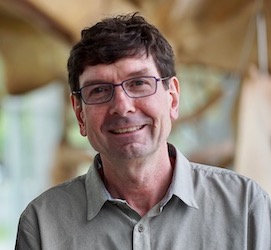
Schluter
lab
This is the web site for Dolph Schluter’s lab at the University of British Columbia
Principally, we study recent adaptive radiation — the evolution of ecological diversity in groups of organisms that are multiplying rapidly. We investigate the ecological forces that drive the rapid origin of new species and allow them to persist, the genetic and genomic basis of species differences, and the wider ecological impacts of adaptive radiation. We carry out field experimental studies of natural selection on genes and phenotypes, observational studies on the role of natural and sexual selection in the evolution of reproductive isolation, experiments on interactions between species and their ecological and evolutionary consequences, genetic studies of adaptive differentiation, evolution in hybrid populations, and comparative genomic studies. At a larger scale we also investigate the evolution of major biodiversity gradients.
Many in the lab work on a mini-explosion of very young species of threespine sticklebacks in lakes of coastal British Columbia, Canada. These include some of the youngest species on earth and they have many advantages for experimental studies of the origin of species and the evolution of differences between them. Lab members have also worked on global speciation gradients, the link between microevolution and macroevolution, climate change and mountain bird distributions, and phylogenetic comparative studies. My earliest work was carried out on Darwin’s famous finches in the Galápagos Islands ,and for while I worked on finches and other small seed-eating birds of continental regions of Africa and North America before switching to sticklebacks for their many study advantages.

Our research on sticklebacks has had three main directions. The first concerns the origin and persistence of species, especially the role of ecological selection in the buildup of mating incompatibilities between populations exploiting different environments. The second direction is the role of interactions (competition and predation) in the evolution of differences between species. This work includes experiments in ponds in which we measure how natural selection on a species is changed when another species (e.g., a competitor) is added to its environment. The third area, in collaboration with David Kingsley at Stanford University, Katie Peichel at the University of Bern, and Felicity Jones at the Max Planck Institute in Tübingen, investigates the genetic and genomic basis of species differences.
The question of species persistence has lately taken on a new urgency, with the rapid rate at which the stickleback species pairs are becoming extinct. Part of our work is dedicated to understanding why this is occurring, and what can be done to forestall doom for the species pairs that remain.
Contact
Phone: (604) 822-2387
Email
Mailing address
Biodiversity Research Centre and Zoology Department
University of
British Columbia
6270 University Blvd.
Vancouver BC, V6T 1Z4,
Canada
Shipping address
Shipping and Receiving
Departments of Botany and Zoology
University of BC
Rm 1015A (Behind UBC Bookstore)
6270
University Blvd
Vancouver BC, V6T 1Z4
604-822-5040
778-879-3411
shiprec ‘at’ botany ‘dot’ ubc
‘dot’ ca
© 2009-2024 Dolph Schluter